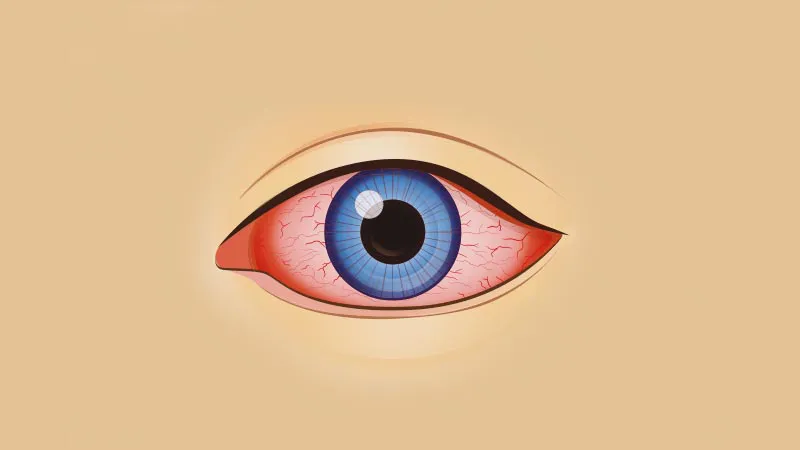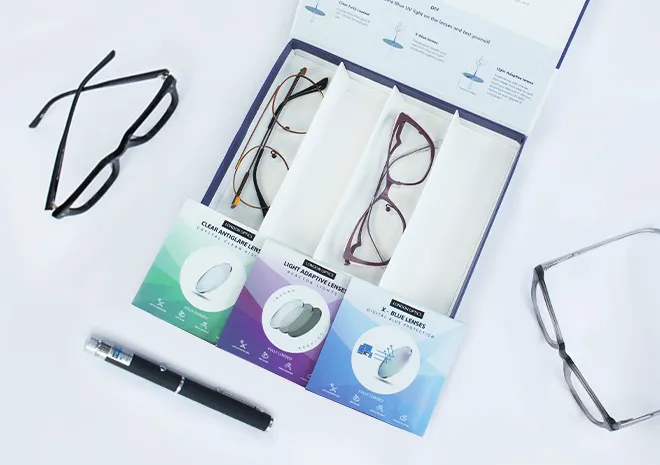The term ‘bloodshot eyes’ is used to describe excessive eye redness.
This mainly happens due to broken blood vessels in the eye. But there could be other reasons behind this problem. Maybe you’re stressed out or maybe you haven’t had a nice sleep in days.
While most of the bloodshot eyes’ causes are benign, others are more serious and need medical attention such as subconjunctival haemorrhage. According to a 2013 study by the National Centre for Biotechnology Information (NCBI) in the US, the incidence of SCH was reported as 2.9% in a study with 8726 patients, and an increase with age was observed, particularly over 50 years of age.
If the redness appears along with pain and vision distortion, then the problem is definitely a bigger one.
This article will throw some light on the causes of bloodshot eyes and their symptoms in greater detail along with the treatment options.
Bloodshot or red eye’s symptoms
Your symptoms are solely based on the cause of your eye redness. Regardless, red eye’s symptoms generally include:
- Bright red spot on the white part of your eye
- Sticky eyes
- Burning or gritty sensation
- Sore or red eyelids
- Feeling like something is in your eye
- Lump on your eyelid
- Constant itchiness in the eye
Make sure you see a doctor to determine what is causing your red eye’s symptoms. If your problem is accompanied by vision decline, make sure you get an eye test and check yourself for severe conditions such as glaucoma.
You can contact our local store in Walkden or Bury to get a free eye test or book an appointment online.
Bloodshot eye’s causes - Why are my eyes red?

The most common causes of bloodshot eyes include inflammation or swelling of the blood vessels on the surface of the eyes.
Bloodshot eye’s causes include:
1.Eye infections
Eye infections can trigger reactions in different parts of the eye. These infections can target various structures of the eye and most commonly produce symptoms such as eye pain, discharge and vision disturbances.
The most common types of infections that cause bloodshot eyes are:
- Inflammation of the eyelids also known as blepharitis
- Bacterial or viral infections such as conjunctivitis
- An open sore in your cornea called a corneal ulcer
- Inflammation of the middle layer of the eye is known as uveitis
2.Allergies
Allergies are also one of the bloodshot eyes’ causes. Allergy triggers include seeds and pollen from grass and leave you with symptoms such as itchy eyes, burning sensation and watery eyes.
Allergic conjunctivitis can occur due to an irritant such as dust or animal dander. In addition to this, if a person wears contact lenses for too long, the ocular irritation might lead to conjunctivitis.
If you have a bloodshot eye on one side, it’s more likely to have occurred due to infection than an allergy.
Make sure you avoid exposure to your allergy triggers and use prescription glasses instead of contact lenses until your eyes become healthy again.
3.Dry eyes
Next up in the list of bloodshot eye’s causes is the dry eye problem.
Certain prescription drugs, medical conditions or even pregnancy can cause dry eye syndrome. It makes the surface of your eyes appear red and leaves you with bloodshot eyes.
Dry eyes refer to a condition where your eyes are unable to produce adequate tears. Either the amount of tears produced is not enough or their quality is too poor.
When your eyes are dry, they become highly sensitive to light or natural irritants and cause red eyes. Some symptoms of dry eyes include:
- A gritty feeling in the eye
- Pain and apparent redness of the conjunctiva
- Excessive tears
- Blurry vision
- Eye fatigue
- Eye discharge
- Heavy eyelids
- Not being able to produce tears
Visit your doctor to get a thorough checkup of your eyes. An ophthalmologist will perform various tests to determine tear production in your bloodshot eyes.
They might ask you to take some measures yourself such as limiting screen time, using proper eyewear, drinking enough water or taking proper sleep.
4.Broken blood vessels & other causes
When the tiny and delicate blood vessels break inside your eyes, the blood gets trapped in the conjunctiva. This is why you get bloodshot eyes. It could happen due to a strong sneeze or excessive eye rubbing or vomiting. However, this problem usually comes with no pain and disappears on its own.
Other causes of bloodshot eyes are:
- Eye trauma or severe ocular injury
- A rapid growth in eye pressure due to an underlying condition such as glaucoma
- Scratches and scrapes on the cornea due to excessive contact lenses usage
- Inflammation of the white portion of the eye known as scleritis
- Styes
Red-eye treatment methods

Red eyes shouldn’t be a big concern as long as they don’t last long or occur often. While you might find solace in redness relieving eye drops, their overuse can lead to more damage than good.
Here are some red-eye treatment methods your doctor will most probably use.
Eye drops
This is the most common method when it comes to treating red or bloodshot eyes. But, you shouldn’t take matters into your own hands. Use these drops as instructed by your doctor to get rid of red eyes quickly.
Along with these drops, your doctor will also advise you to take proper sleep and drink plenty of water. You’ll feel the urge to use these drops more often, especially when your eyes are dry, but you shouldn’t overlook the possible consequences.
Oral medications
Depending on the seriousness of your problem, your optometrist may refer you to an ophthalmologist. They are experts in the matter of eye-related diseases and disorders.
They will recommend eye creams or oral medications as a part of your red-eye treatment. If there are severe issues such as conjunctivitis or blepharitis, using eye drops won’t be enough. In such a scenario, you’ll have to take medications to ease your bloodshot eyes.
When to seek immediate help for bloodshot eyes?
Even though most of the red eye’s symptoms are mild, you should seek immediate medical help:
- If your eye redness is due to a trauma or an injury
- If you experience sudden change in your vision
- If you’re seeing halos around lights
- If you experience nausea and vomiting
Decongestants and antihistamines will help with itchy eyes due to allergies. However, if the eye redness is due to a bacterial infection, your doctor will prescribe you antibiotics for your red-eye treatment.
Precautions for red eyes

There’s not a better way to get rid of bloodshot eyes than avoiding them in the first place. Follow the measures below to prevent your eyes from developing redness.
- Wash your hands with soap or use sanitiser before touching your eyes
- Remove all your eye makeup before you go to sleep. The buildup of gunk from makeup is able to cause eye infections too
- Do not use contact lenses for a longer period of time
- Avoid exposure to your allergy triggers
- Do not use tap water with contact lenses
Your eyes can turn red due to many reasons. While this problem goes away on its own most of the time, it could also be a symptom of a more severe problem lying underneath. If you’re concerned about your bloodshot eyes, book an immediate eye appointment with us.
 30 Under 30 Europe 2024
30 Under 30 Europe 2024
























 Terrible
Terrible
 Bad
Bad
 Okay
Okay
 Good
Good
 Amazing
Amazing

 Google
Google


